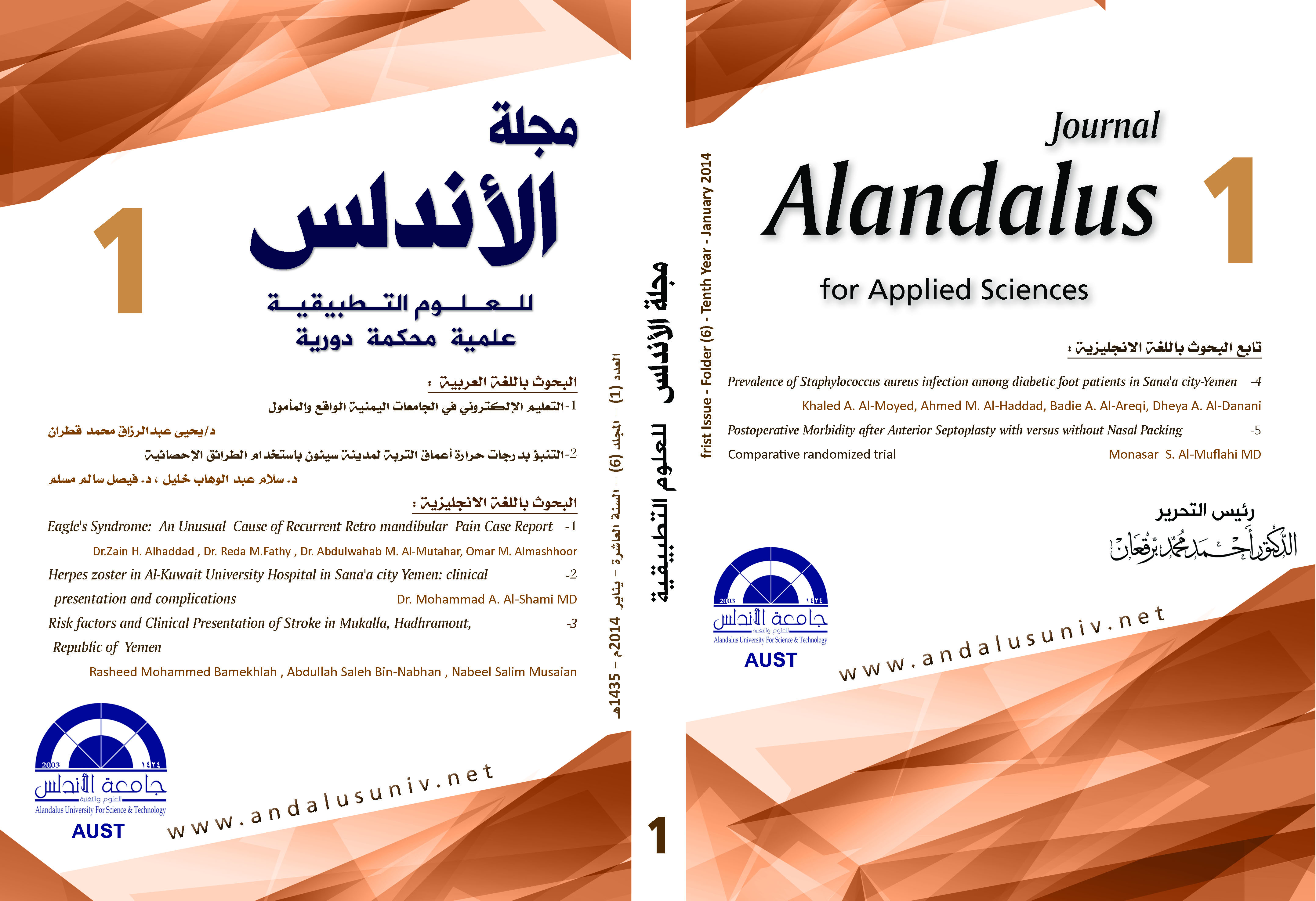Prevalence of staphylococcus aureus infection among diabetic foot patients in Sana'a City-Yemen Khaled A. Al-Moyed, Ahmed M. Al-Haddad, Badie A. Al-Areqi, Dheya A. Al-Danan
محتوى المقالة الرئيسي
الملخص
Diabetes mellitus is a progressive disease with chronic complications.
Foot infections are a frequent complication for diabetic patients.
The infection with Staphylococcus aureus in the diabetic foot accelerate the inflammatory process, endothelial injury and blood coagulation, ultimately lead to a faster death.
The aim of this study was, firstly to determine the prevalence of S.
aureus among diabetic foot patients, secondly to identify the predisposing factors associated with S.
aureus infection and diabetic foot, and thirdly to determine the antibiotics that are effective against S.
aureus isolates.
This was a case-finding study which included 93 of diabetic foot patients of whom 66 were males and 27 were females.
Their age ranged from 16 to ≥ 76 years old, with a mean age of 60.5 years.
These patients seeked medical attention for different diabetic foot infections at Al-Thawra General Hospital, Al- Gumhouri Teaching Hospital and Azal Specialized Hospital in Sana’a city, Yemen during the period, starting in December 2008 and ending in November 2009.
A swab was collected from each infected diabetic foot patient and cultured for S.
aureus using standard bacteriological procedures.
S.
aureus was isolated from 56% of the total diabetic foot patients, among these isolates, MRSA represented 55.8% and VRSA 9.6%.
Regarding the predisposing factors for the studied patients, hypertension and peripheral neuropathy represented 30.1% and 32.2%, but these results were not statistically significant in term of the patients and S.aureus infections with a relative risk for peripheral vascular disease patients who were one and half time more at risk than the others in contracting S.
aureus.
As regards the antibiotics tested in this study, the efficacy of these antibiotics against S.
aureus isolates is shown in the following order; imipenem (98.1%), cefepime (96.2%), vancomycin (90.4%), rifampicin (86.5%), ceftriaxone (73.1%), gentamicin (67.3%), clindamycin (67.3%), ciprofloxacin (65.4%), fusidic acid (63.5%), erythromycin (63.5%), tetracycline (55.8%), methicillin (44.2%), oxacillin (44.2%) and augmentin (32.7%).
Finally, among all S.
aureus isolates, 63.5% were multi-drug resistant and among all MRSA isolates, 69% were also multi-drug resistant.
Further studies are recommended to determine all the etiological agents that infect the diabetic foot other than S.
aureus, especially for the rest governorates of the country and the periodical testing of more recent antibiotics for accurate susceptibility and therapy.
